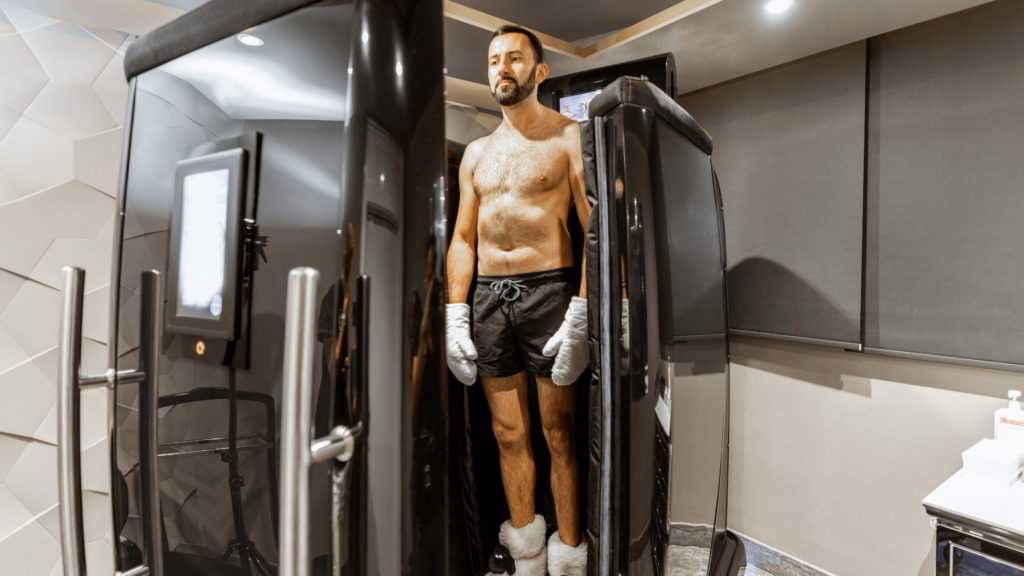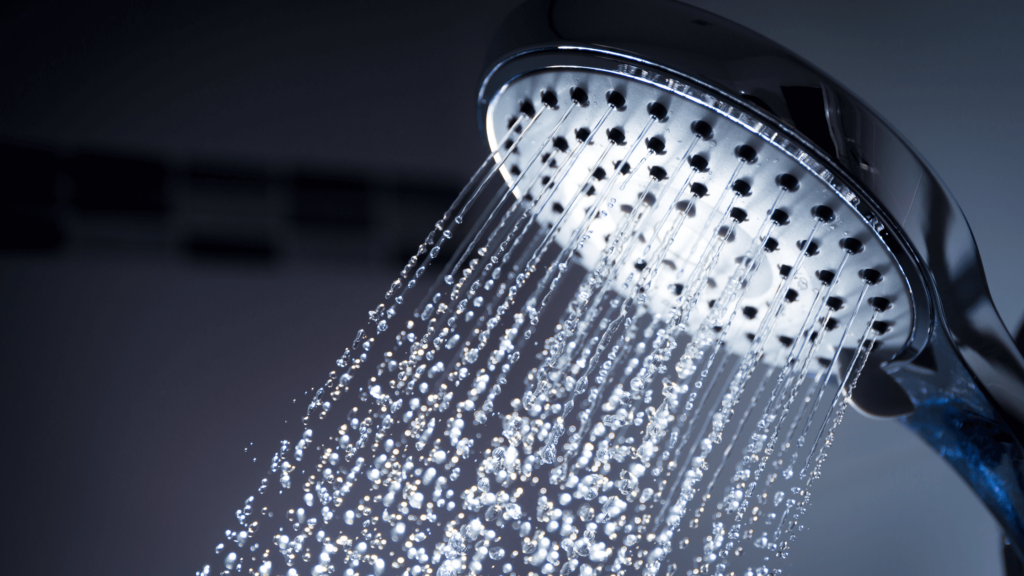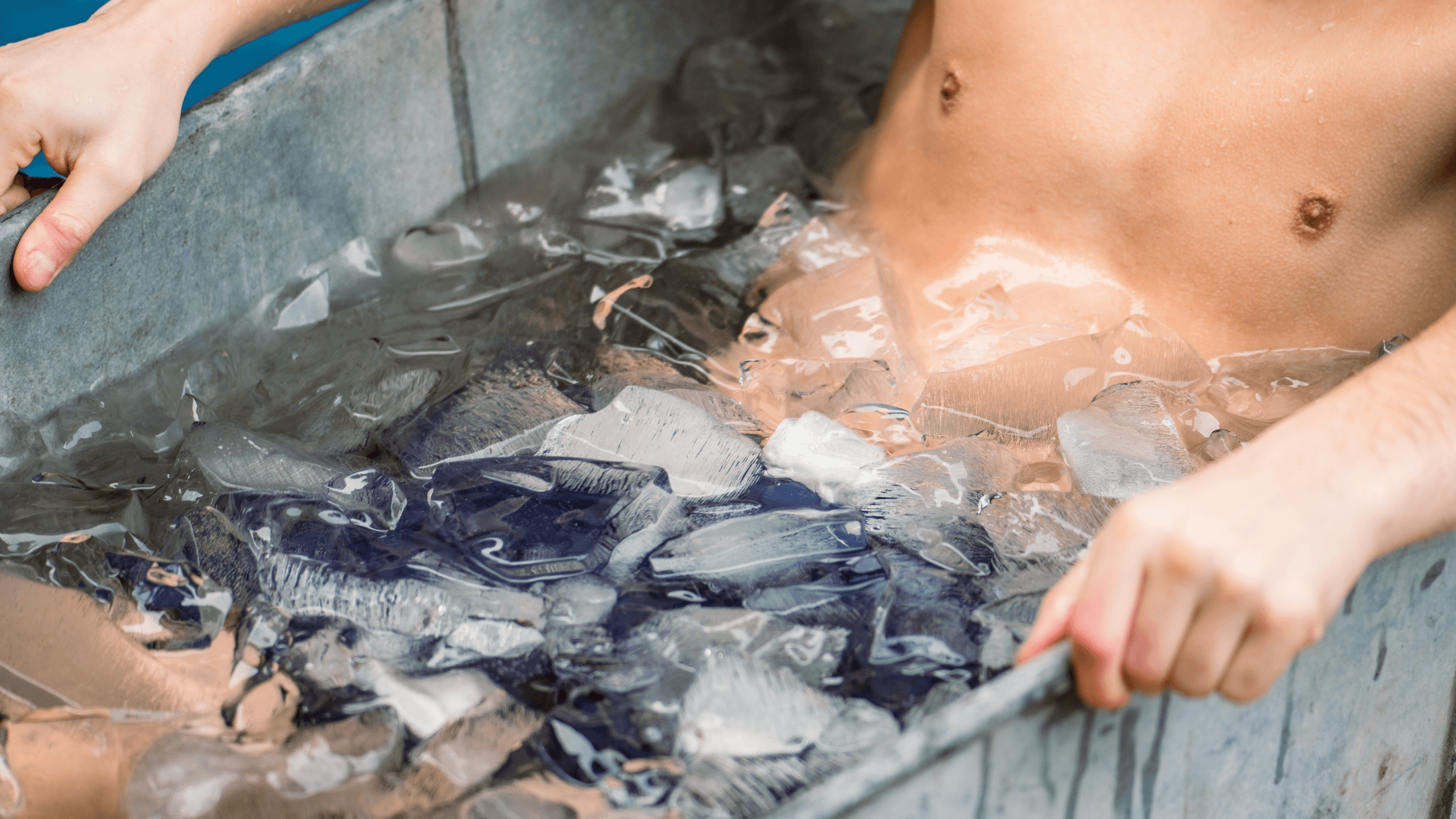Cold showers aren’t just a fad—scientific research backs them. Cold water therapy has been linked to better mood, more energy, a stronger immune system, less muscle soreness and pain, and a higher metabolism. Contrast showers, cold plunges, and cold packs are a few low-cost options for cold therapy at home.
Quick look
- Cold therapy is an ancient practice used for therapeutic purposes.
- Cold therapy benefits include improved mood, greater alertness, less muscle soreness and pain, and a more robust immune system.
- Contrast showers, cold plunges, cold showers, and cold compresses or packs are easy ways to do cold therapy at home.
- Cold therapy is safe for most adults, but people with pre-existing health conditions should speak to their healthcare provider first.
What is cold therapy?

Cold therapy is any practice that exposes the body to cold temperatures to cool body tissues for therapeutic reasons. There are several methods of cold therapy, including:
- Cold showers (or contrast showers)
- Whole-body cryotherapy
- Cold water immersion (CWI) or ice baths
- Localized ice application
Cold therapy has been used for centuries, dating back to Ancient Greece, where it was used for relaxation and socialization. Today, cold water therapy takes many forms for many purposes. While some people choose expensive contraptions for cold therapy, you don’t have to break the bank to reap the benefits—your bathtub or shower can do the job just fine.
Health benefits of cold showers
1. Boosts mood
Cold exposure is one way to activate your body’s sympathetic nervous system (SNS), the branch of the autonomic nervous system responsible for your fight-or-flight response. The SNS also regulates vital functions like heart rate, respiration rate, blood pressure, and hormone release.
Activation of the SNS increases blood levels of beta-endorphin and noradrenaline and increases synaptic release of noradrenaline in the brain, too. Due to the high density of cold receptors in the skin, cold exposure sends an abundance of electrical impulses from peripheral nerve endings to the brain, which may have an anti-depressive effect.
Put simply, cold exposure can increase endorphin release, which may help you feel happier.
Although cold therapy isn’t a standalone treatment for depression, one study found that a five-minute cold shower once or twice a day could help relieve symptoms of depression.
2. Enhances alertness
When cold water hits your skin, peripheral blood vessels alternate between vasoconstriction and vasodilation.
Here’s how it works:
- Blood vessels initially constrict to reduce heat loss
- After 5-10 minutes of cold exposure, the sympathetic response causes blood vessels to dilate (called cold-induced vasodilation, CIVD)
- CIVD results from a cold-induced decrease in sympathetic activity around the sphincter muscle of the arteriovenous anastomosis (direct connections between small arteries and small veins)
- A new phase of vasoconstriction follows vasodilation
This cycle repeats itself, forming a “pump” that pushes blood through the body.
The alertness you feel is thanks to a rush of endorphins released from cold exposure. According to some research, the most commonly reported benefit from cold showers was an increase in perceived energy levels, similar to the effect achieved with caffeine consumption.
3. Reduces muscle soreness
Muscle soreness is a common complaint in the construction industry, but research suggests that a quick cold shower after work could reduce pain and help ease sore muscles.
According to a systematic review published in Frontiers of Psychology, cold water immersion directly after exercise—or, in this case, a strenuous workday—can effectively reduce muscle soreness and accelerate fatigue recovery. Researchers found that CWI reduced specific markers of muscle damage 24 and 48 hours post-exercise. Other studies find that people who did cold therapy within an hour of exercising delayed post-exercise muscle soreness.
On the other hand, heat therapy has also shown benefits in reducing muscle soreness by dilating blood vessels to flush out toxins. However, hot water can irritate and dry out the skin, so if you have a choice between the two, go for cold.
4. Relieves pain
Research suggests that cold exposure triggers the release of electrical impulses from cold receptors on the skin to the brain that can help reduce pain.
Think about this: You injure your ankle and grab a bag of frozen peas to help reduce the swelling and curb the pain. By doing this, you’re applying DIY cryotherapy to your ankle to promote an analgesic (pain-relief) effect on the injury site.
Cold therapy can also induce an anti-inflammatory response in the body, which may help reduce inflammation-related pain. For example, a 2017 study found that cold showers reduced inflammation and relieved pain in people with chronic inflammatory arthritis.
5. Boosts metabolism
Some research shows that cold showers can kickstart your metabolism by activating brown fat—a higher basal metabolic rate translates to more calories and fat burned.
Brown adipose tissue, also called brown fat, has higher concentrations of mitochondria, allowing brown fat to burn energy rather than store it. When brown fat is activated, heat is generated through a process known as thermogenesis.
Cold therapy, especially prolonged exposure through things like cold plunges, is a powerful method of stimulating brown fat. Cold exposure stimulates a sympathetically mediated increase in the rate of oxidative metabolism of brown and beige fat, which results in increased uptake of both glucose and free fatty acids. A higher rate of oxidative metabolism also generates heat to maintain core body temperature
6. Enhances immune function
Animal studies have shown that cold exposure triggers changes in both cellular and humoral aspects of immune function, including:
- Reduced natural killer (NK) cell count and cytolytic activity
- Decreased lymphocyte proliferation
- Enhanced production of proinflammatory cytokines (after several days of cold exposure)
However, it’s important to note that the conditions of most animal studies do not resemble realistic conditions, so human outcomes may differ.
How to do hot and cold therapy at home

When it comes to cold therapy, there are two routes: slow and steady or all-out. If you typically cringe at the thought of anything but a hot shower, taking it slow might be the best route. But if you’re okay with a shock to your system, taking the plunge (quite literally) might work for you.
Here are your options:
- Contrast showers: Alternating between hot/warm and cold water is the simplest way to start with cold therapy. After a warm shower, gradually turn to cold water for as long as you can tolerate. Once you’re comfortable with that, alternate between two to three minutes hot and one minute cold for your shower. Contrast showers are one of the best methods to increase circulation.
- Cold plunge (immersion): Fill a plunge pool or bathtub with ice-cold water. Get in and take note of how long you can comfortably stay in the water—this is your baseline. Begin with a short plunge (30 seconds or one minute) and gradually increase the time as your body adapts.
- Cold showers: If you can tolerate cold for longer periods, a cold shower is a great alternative to contrast showers. Turn the water to the coldest temperature you can tolerate and shower as normal.
- Cold compresses/packs: A homemade cold compress using a bag of ice, frozen vegetables, or frozen washcloth is a simple way to apply cold therapy to a specific area. Place a thin towel between the pack and the skin to prevent tissue damage.
How long should you take a cold shower for?
You don’t need to stand under cold water for long to reap the benefits—a few minutes is usually enough.
A 2016 study in PLoS One looked at the effects of cold showers on health and work in participants 18 and 65 years without severe comorbidity and no routine experience of cold showering. Subjects completed cold showers for 30, 60, and 90 seconds for 30 consecutive days, followed by 60 days of showering cold at their own discretion. Results showed a 29% reduction in sickness absence for the group taking cold showers.
Put simply, a minute or two of cold showering is all you need to improve health outcomes.
The downside of cold showers
Prolonged cold showers (over 15 minutes) increase the risk of hypothermia.
The risks for cold plunges are slightly different. CWI triggers the cold shock response, which increases respiratory rate, heart rate, and blood pressure and decreases cerebral blood perfusion.
Although some evidence shows reduced cardiovascular risk factors in cold-adapted subjects, CWI still increases the heart’s workload and, therefore, increases stress on the heart. As such, people with pre-existing cardiovascular conditions, hypertension, or other heart-related issues should be cautious when using cold therapy.
People with Raynaud’s disease—a condition of extreme cold sensitivity and circulation problems—should avoid cold plunges.
If you’re curious about cold therapy and want to reap the benefits but don’t want to take the plunge, a cold or contrast shower are suitable alternatives that offer the best of both worlds.


